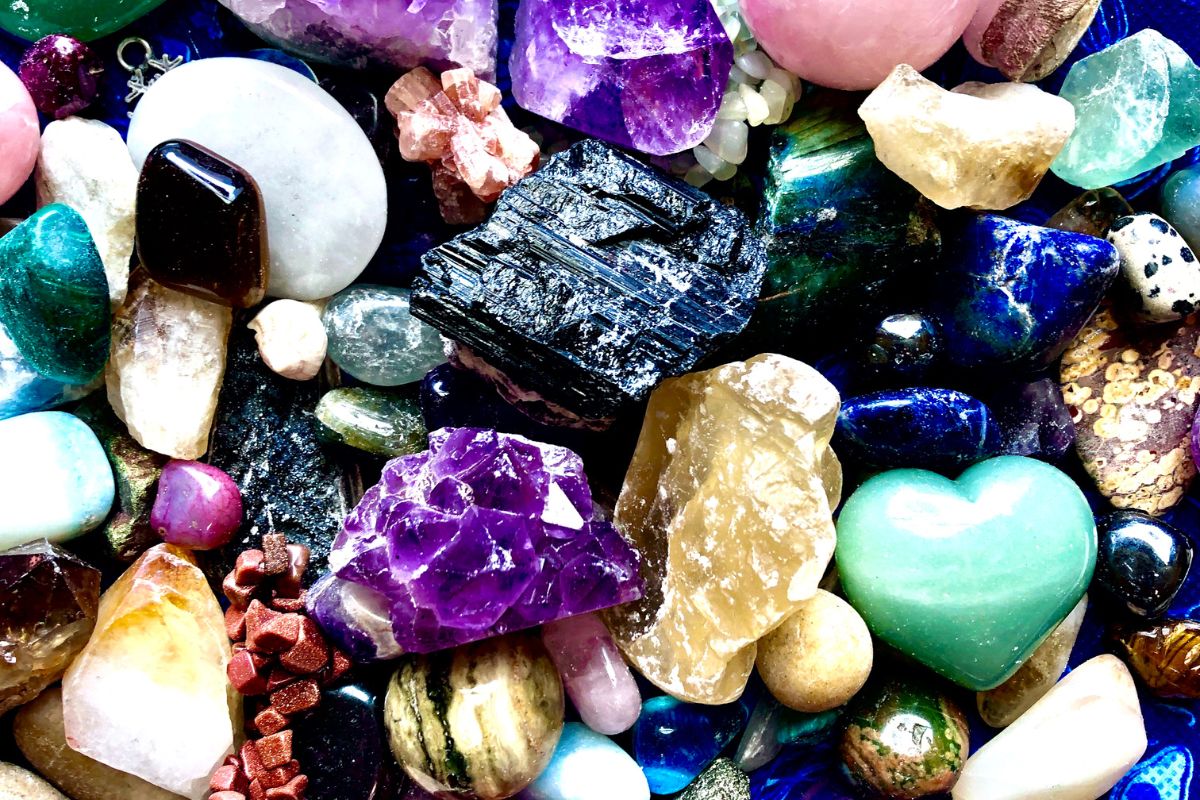Carnelian and Garnet are two gemstones that are similar in several ways. Both are easily identified by their vivid colors, and both are used to promote feelings of confidence and courage.
However, there are also many things that differentiate Carnelian from Garnet. If you’re going to use either of these crystals as part of your healing therapy, it’s important to know the differences and how to use them.

Here are the facts, uses, and more information about Carnelian vs Garnet!
Introduction To Carnelian
Carnelian is a semi-precious gemstone. It’s a mineral belonging to the chalcedony family. You can recognize carnelian by its color, which comes from iron oxide and can range from light pink to a deep, burnt orange.
You may hear Carnelian referred to as the Sunset Stone. This is what the Ancient Egyptians named the stone, probably because of its fire-like shades of orange and pink.
Introduction To Garnet
The term ‘Garnet’ can be used to refer to a group of minerals dating back to the Bronze Age. These silicate minerals can be either abrasives or gemstones.
While the chemical composition of different types of Garnet may differ in terms of chemical composition, the physical properties are more or less the same.
Although you can find species of Garnet in just about every color, the Garnet is mostly associated with a deep red shade. Some Garnets may be transparent, whereas others can be opaque, but all have a vitreous luster similar to amber.
Carnelian Properties
Carnelian is a stone of vitality, fertility, and confidence. It is thought to re-invigorate the wearer, enhancing strength (both physical and mental) and inspiring new beginnings.
The connection between Carnelian and fertility dates back to the Ancient Egyptian era, when the crystal was thought to be filled with feminine energy and connected to the goddess Isis. Because of this, the stone is also associated with passion and love.
It was during the Ancient Egyptian period that Carnelian also became known as a stone for protection and courage during battle.
During the Middle Ages, Carnelian started to be used as a healing stone, protecting against disease and extending longevity.
Today, Carnelian is used to bring out creativity and confidence. It’s also considered a stone of sexuality, including fertility.
Since Carnelian is considered a detoxifying stone, it can help with the effects of substance use and remove toxins from your body. You may even find Carnelian a source of pain relief, especially for conditions like rheumatism or lower back pain.
Garnet Properties
Garnet is a cleansing and purifying gemstone. It’s associated with energizing effects, which is not surprising, considering that this crystal’s element is fire.
Although Garnet is thought to revitalize (increasing courage, sex drive, and survival instincts and decreasing inhibitions while improving confidence), it’s also a balancing stone. This means that it will help to balance and regulate your energy.
In the physical sense, Garnet is thought to promote regeneration in the body. If you are unwell or suffering from an injury, Garnet can help you to heal.
Specifically, Garnet’s healing properties are most impactful for spinal and bone disorders as well as conditions impacting the heart, circulation, and lungs. It can also be beneficial for your immune system and help to boost your energy throughout the day.

How To Use Carnelian
One of the traditional ways to use Carnelian involves wearing the stone as a necklace or a bracelet.
This is especially helpful if you are using Carnelian for its courage and vitality-enhancing properties. Ancient Egyptian warriors used to wear Carnelian on their person during battle.
Wearing Carnelian can also be effective if you are using it to counteract the symptoms of health problems.
Alternatively, if you are using Carnelian for a boost in confidence and creativity, keeping it close by without wearing it is an option. In a pocket or bag is often practical.
For sexual or fertility purposes, keeping the crystal near your bed is the best way to benefit from its healing properties.
How To Use Garnet
Garnet is often used to recharge and revitalize the mind and body. This is something best done in a safe and restful place where you feel that you can relax and receive new energy.
Therefore, we recommend keeping Garnet in your home so that its energy can fill your space and greet you whenever you enter.
The room in which you choose to keep your Garnet gemstone may be different depending on the specific healing or energizing properties you are looking for.
For example, if you are looking to increase your sex drive, you could do so by keeping Garnet next to your bed. On the other hand, if you find the need to balance your energy during the work day, keeping it in your study could be a good idea.
Garnet is often thought of as a travel talisman, so you might want to be able to carry it with you wherever you go. You could either put it in your pocket or wear it as a piece of jewelry.
Pendants and bracelets are always popular choices, but rings work just as well.
By wearing Garnet jewelry, you’re allowing the stone to send its vibrations directly to your chakras, which is the most effective way to use Garnet.
Final Thoughts
Garnet and Carnelian may both be brightly colored gemstones with some similar properties, but they have some important differences, too!
Both of these stones are silicate minerals, and both can vary in color. However, the most common color for Carnelian is orange, while Garnet is usually associated with the color red.
Carnelian boosts courage and confidence as well as creativity, fertility, and passion. It’s also a healing crystal used to detoxify and reduce pain.
Meanwhile, Garnet energizes and purifies, improving vitality and survival instincts while targeting symptoms of heart, bone, lung, and circulatory conditions.
Garnet and Carnelian can be used in similar ways, depending on your desired effect. You can place them in key areas of your home, carry them in a pocket, or wear them as jewelry.
- 15 Crystals That Cannot Be Exposed To The Sun - January 7, 2024
- Malachite Vs Fuchsite – Benefits And Uses - January 7, 2024
- Malachite Vs. Green Jasper: Benefits And Uses - January 7, 2024










